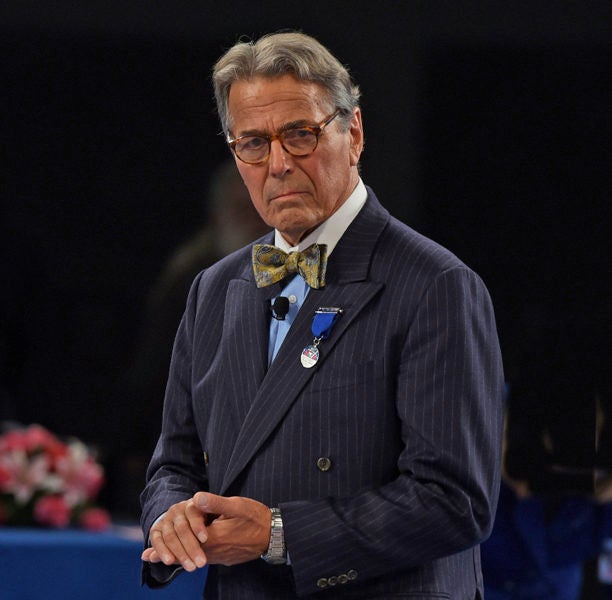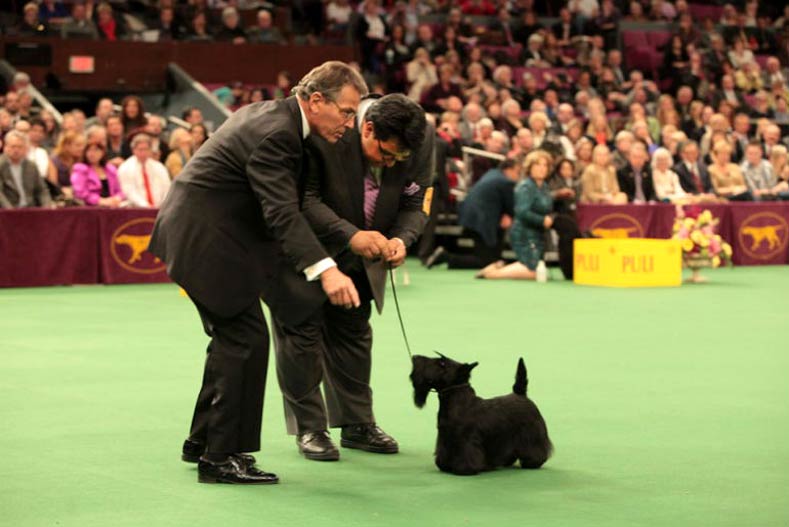
Native New Yorkers tell it like it is, and Elliott B. Weiss — the Best in Show judge at this year’s AKC National Championship presented by Royal Canin — is no exception.
“I was a teenager, and I grew up without a dog,” he explains about how he got involved in the sport of purebred dogs. “My aunt got a Borzoi and said, ‘Come with me to a match show,’” an unofficial competition where newcomers go to practice their skills and seasoned fanciers acclimate their green dogs. “My aunt was about as athletic as a brick, so I ran around the ring with the dog for her. And I learned along the way.”
It’s quite a leap from that tentative teenaged jog around a ring to adjudicating the final competition at one of the country’s most high-profile dog shows, which this year will be held Saturday and Sunday, December 15 and 16, at the Orange County Convention Center in Orlando, Florida. But it was perhaps an inevitable progression: At seemingly every major crossroad in his life, Weiss felt the pull of dog shows. And more times than not, he followed it.
A couple of years before his match-show debut, Weiss was taking an art class in Manhattan when his instructor suggested that the upcoming Westminster Kennel Club show would be an excellent place to look for life-drawing subjects.
“My mother never threw anything out, and years later, I found the catalog from that show,” remembers Weiss, who now lives in Novelty, Ohio. “The breed I circled happened to be English Setters’’ — a breed he has lived with and bred for almost a quarter-century. “And two bitches whose names I put stars next to were shown by Anne Rogers and Jane Kamp,” two dog-show icons later known by their respective married names — Clark and Forsyth — who became his friends and mentors.
Fast-forward to college: Weiss was taking business courses when he had the sudden realization he wanted to do something else with the rest of his life.
“I was at a dog show with my aunt showing a son of that female Borzoi, and I was reading the AKC Gazette,” Weiss explains. “In the back of the magazine was an ad for Ted Young Jr. looking for show help.” Weiss didn’t know who the famous handler was, “but I knew I didn’t want to go back to school the following semester.”
Weiss spent three years as Young’s assistant before going off on his own as a licensed professional handler in 1969. After more than two decades, Weiss broke a foot bone in a car accident and decided to hang up his show lead and go back to school to get his graduate degree.
Weiss admits that he misses the grooming and conditioning that went into preparing a show dog for the ring. While artful handlers know how to trim a dog to accentuate its virtues and hide its faults, experienced judges look beyond the artifice to determine how well the dog matches the standard, which is the “blueprint of perfection” for that breed. “Great breeders have a picture in their minds of what they want to get,” Weiss says, noting that every standard allows latitude for individual interpretation. “No golfer is ever going to have a perfect game — Tiger Woods never shot a perfect 18. But it’s about getting as close as you can.”

Weiss says he’s humbled to be given such a prestigious assignment, just as he was in 2010 when he was asked to judge Best in Show at the Westminster Kennel Club show. Contemplating his future appointment in Florida has him thinking about the past, including words of wisdom from the respected old-timers who mentored him. One of them was Alva Rosenberg, in whose antique shop Weiss would while away hours discussing the art of judging dogs.
“Alva said something to me years ago that I didn’t understand then, but I do now,” Weiss says. “He said, ‘Elliott, 85 percent of the dogs I judge I don’t even care for. The other 15 percent is good. And out of that 15 percent, five are excellent.’” The secret of judging dogs, Rosenberg explained, “was learning to appreciate and love the top 2 percent.”
“If you see something that makes your heart skip a beat once in a while, that’s what keeps you going back,” Weiss says about judging, which, with its often grueling travel demands and long hours, isn’t always as glamorous as it sounds. And that telltale flutter doesn’t have to happen in the ring: Weiss remembers a dog who stopped him in his tracks just by walking past the ring where Weiss was awaiting the start of judging. Two years later, Weiss was pleased to put his admiration on record by awarding him a Best in Show.
Weiss obviously doesn’t know which seven Group winners will trot onto the blue carpet for Best in Show this December in Orlando, but he does know there is every chance they will be quality animals, having been advanced through the weekend’s ever-narrowing competition by a roster of some of the country’s most respected fellow judges. It will be his job, in those hushed moments of final competition, to point to the one dog that he believes is the best of the best.
“In sports, they talk about being in the zone,” Weiss muses. “In the Best in Show ring, with those seven different dogs in front of you, it’s like playing seven different games.” Like a seasoned pro, he knows that as he concentrates on the job at hand, the onlookers and the television cameras will fade away, leaving him in a sort of surreal bubble in which time stands still as he draws on decades of hard-earned experience to arrive at a decision.
“It’s just you and the dogs,” he shrugs. “And that’s it.”

